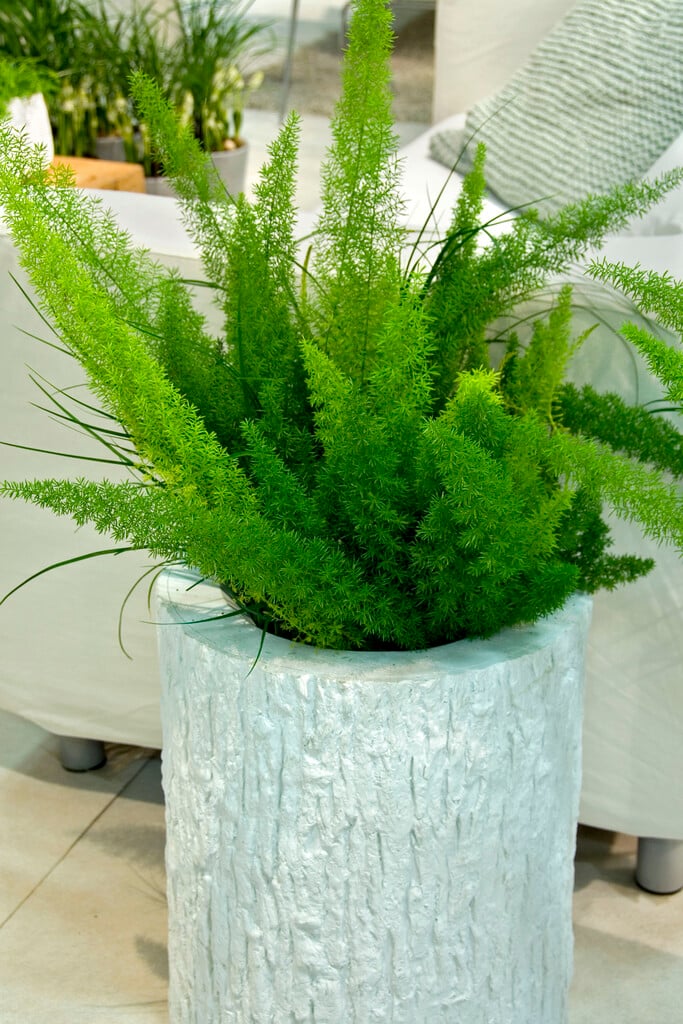Not the plant you're looking for? Search over 300,000 plants
Houseplants
Size
Ultimate height
0.1–0.5 metresTime to ultimate height
2–5 yearsUltimate spread
0.5–1 metresGrowing conditions
Chalk
Clay
Loam
Sand
Moisture
Moist but well–drainedpH
Acid, Alkaline, NeutralColour & scent
| Stem | Flower | Foliage | Fruit | |
| Spring | Green | |||
|---|---|---|---|---|
| Summer | Green | Green | ||
| Autumn | Green | Red | ||
| Winter | Green |
Position
- Partial shade
Aspect
East–facing or West–facing
Exposure
Sheltered Hardiness
H1CBotanical details
- Family
- Asparagaceae
- Native to GB / Ireland
- No
- Foliage
- Evergreen
- Habit
- Clump forming
- Potentially harmful
- Skin allergen, fruits are harmful if eaten. Wear gloves and other protective equipment when handling
- Genus
Asparagus can be evergreen or deciduous perennials or subshrubs, sometimes climbing, with tuberous rootstock. Stems bear both inconspicuous scale-like leaves and larger, leaf-like phylloclades, with small white or pinkish flowers followed by red berries
- Name status
Correct
How to grow
Cultivation
Grow in a frost-free room in any soil, in good but not direct, sunlight. Can go outside in summer when night time temperatures stay above 5C
Propagation
Propagate by seed or division
Suggested planting locations and garden types
- Houseplants
- Cut flowers
- Conservatory and greenhouse
Pruning
No pruning required
Pests
May be susceptible to asparagus beetle, slugs and snails
Diseases
Generally disease-free
Get involved
The Royal Horticultural Society is the UK’s leading gardening charity. We aim to enrich everyone’s life through plants, and make the UK a greener and more beautiful place.
